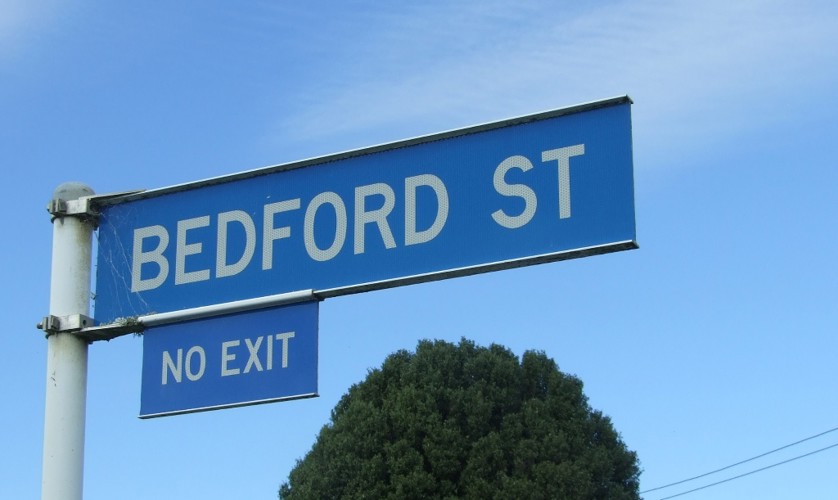 Bedford Street sign (2013). Mike Gooch. Word on the Street image collection.
Bedford Street sign (2013). Mike Gooch. Word on the Street image collection.
 Bedford Street sign (2013). Mike Gooch. Word on the Street image collection.
Bedford Street sign (2013). Mike Gooch. Word on the Street image collection.
The name Bedford once adorned the famous marque of British trucks manufactured in Luton in Bedfordshire. Bedford Vehicles was a subsidiary of Vauxhall Motors, which was itself the British subsidiary of General Motors (GM), established in 1930. Bedford built commercial vehicles and exported trucks all over the world.
Until 1925, GM assembled trucks in Brazil from parts made in their Canadian works. Such trucks were marketed as "British Chevrolet". In 1925, GM bought Vauxhall Motors and truck production was moved to Luton, Vauxhall's headquarters. Bedford ambulance models were also produced. Bedford trucks used the overhead valve six-cylinder Chevrolet engine. Known to enthusiasts as the Chevrolet Stove Bolt 6, the smooth running, inline six-cylinder engine was ahead of its time.
Even though the Bedford truck is not the inspiration for the New Plymouth street of the same name, they both acknowledge the Dukes of Bedford. Given legal status in 1957, Bedford Street runs off Fitzroy Road in an area once known as the Jordan and Waters housing block. It was named after the Bedford Street in Plymouth, England which dates from the 18th Century.
Plymouth's Bedford Street was destroyed during the Blitz in World War Two, when the town was heavily and repeatedly bombed. Bedford itself is a town with a history. It was originally an agricultural town, with wool being an important industry. From the 16th Century, much of Bedfordshire became a centre of England's lace industry, with skilled lace-makers emigrating from Europe. Lace continued to be important in Bedford up until the early 20th Century. In 1660, John Bunyan was imprisoned for 12 years in Bedford Gaol, where he wrote The Pilgrim's Progress. The modern Duke of Bedford was one of the pioneers in opening stately homes for public tourism.
This story was originally published in the Taranaki Daily News.
Please do not reproduce these images without permission from Puke Ariki.
Contact us for more information or you can order images online here.